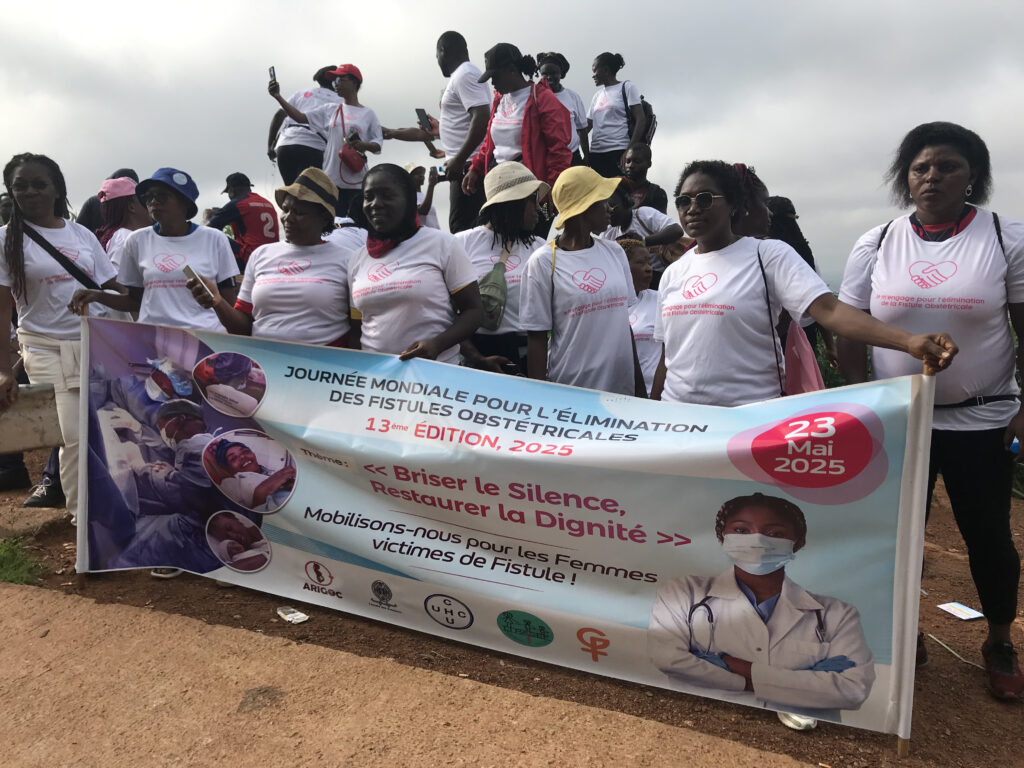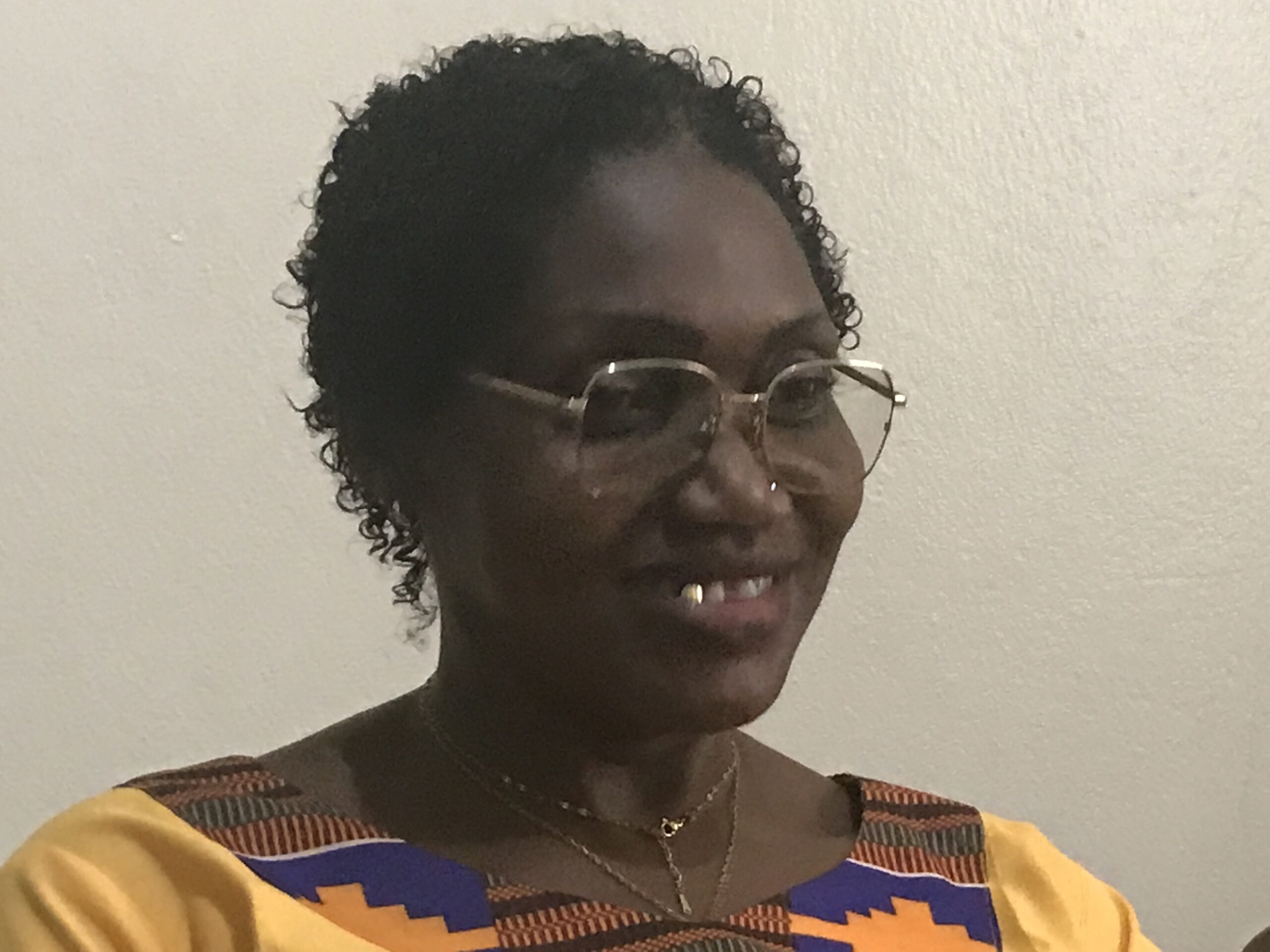By Leocadia Bongben
Micaëlle Messina Beyira was a law student with a lofty dream of one day wearing the robe, but at 18, her first pregnancy blurred her dream. She completed her prenatal visits; however, she had a laborious delivery. “I was in labour for three days and nights with a delivery team that insisted on a natural delivery. By the third day, I was weak and fainted before the C-section was performed on me, but it was too late; I lost the baby,” Beyira narrates.
A week afterwards, urine started oozing out uncontrollably. The medic in charge explained that with the long labour, the child’s head had pressed on the bladder for a long time, thus creating a hole, Beyira adds.
According to experts, obstetric fistula is a communication between the vagina and the bladder or rectum leading to the leakage of feces or urine from the vagina.
Beyira went to a Spanish hospital in Yemsoa, where she stayed for months without any change. She then had her first operation in 2009 but later discovered urine was passing through two channels even if the fistula was operated on. The second repair was in 2013.
Many other women, like Beyira have had a bitter experience with fistulas, and the causes are multiple. Experts identify prolonged labour, use of sharp objects during delivery, tears right to the anus, or abortion using instruments that can cause direct tears of the bladder or the rectum.
Unlike Beyira’s case, Lucienne Mokam had a fistula provoked by a hysterectomy, an operation resulting from an abnormality in the development of a 16-week fetus. “I was operated on in November 2024, and two weeks after, I started having leakage. I went back to my gynecologist, who did not understand what was happening. I took medical examinations and an X-ray, yet there was no solution. “I was diagnosed with a fistula after six months,” Mokam recalls.
Numerous emotional and psychosocial consequences can result from obstetric fistulas. Mokam experienced so much trauma that she nearly became depressed. She believed it to be witchcraft because she didn’t comprehend the sickness. “I was not sleeping; I changed my diapers four times every night,” she explains.
Some women are lucky to get information and have their fistulas repaired, but many still wallow in shame and stigma. Elizabeth Beti-Ewere was not confident enough to speak at a conference on fistula as she is awaiting another repair attempt. “Follow my delivery of a five-kilogram baby; I had obstetric fistula. I was first operated on at the Djoungolo hospital, then at Bafia, where I was operated on twice, yet urine leakage has not stopped,” she said in a sad voice.
Obstetric fistula remains a public health problem in sub-Saharan African countries with limited resources. In the CEMAC countries, out of 1000 deliveries, there are 4 cases of fistulas. In Yaoundé alone, there are about 500 new cases of fistulas every year. The Cameroon Ministry of Public Health indicates that 20,000 women suffer from obstetric fistulas, with 2,000 new cases every year.

Fistula repairs to put a smile on women’s faces
The man known as the “father of fistula,” Prof. Pierre Marie Tebeu, obstetrician-gynecologist, former head of the obstetrics and gynecology department at the University Hospital Center (CHU) of Yaoundé and director general of the Interstate Center for Higher Education in Public Health of Central Africa (CIESPAC), has restored smiles to the faces of several ladies. About 40 women get their fistulas healed annually thanks to Tebeu’s twice-yearly free fistula treatment initiatives. Beyira and Mokam had their fistulas repaired during one of the free campaigns.

“We had our fistula repaired during free campaigns. We only paid for laboratory tests and anesthesia. Follow-up was great,” Mokam says. However, normal fistula operations cost about FCFA 300,000, which remains beyond reach for most women, especially in the rural areas.
What should women do after fistula repairs? Dr. Kapgang N. Kevine explains.
Coming out of the traumatic experience, seeing more women suffer from fistulas, and opening up freely to her, Beyira decided to become a nurse. “I became the link between other women and the hospital, which was a motivation for me. My end-of-training project focused on the psychological trauma and lack of self-confidence women go through.”
Due to the discomfort caused by the fistula, Beyira and Mokam were unable to resume their regular lives and sexual activities until the treatment was completed.
Beyira and Mokam are fortunate because fistula repairs only work 30% of the time. The reasons are the types of fistulas—large fistulas—and the duration of the fistula. According to Tebeu, fistula surgeries are difficult and require a deeper comprehension of the skills because every fistula has a different technique. Tebeu recommends the addition of training modules in the faculties of medicine to integrate training on fistulas in the program based on competence.
Risk factors account for the continued increase in new cases, including women who deliver at home, the absence of qualified personnel for deliveries, and some cases that have not been operated on because there is a shortage of surgeons to operate on obstetric fistulas. There is a need to develop confidence and leadership.
According to Tebeu, educating the public about the dangers of home births, the importance of prenatal care, the importance of women attending school, and the use of family planning techniques to prevent early pregnancies are all crucial in preventing obstetric fistulas.
Due to their greater suffering, women should be involved in the battle against obstetric fistulas and should reach out to women who have had their fistulas treated. By raising awareness among other women in the community, medical facilities, and social circles, Beyira and Mokam have established themselves as ambassadors in the battle against obstetric fistulas.

“I created a WhatsApp group for women whose fistulas have been repaired. I go to hospitals to search for women with fistulas, telling them that there is a solution. I want to tell women who are suffering from fistulas that there is a solution.”
As the world celebrated the International Day for the Elimination of Fistulas, the association of resident doctors and interns, ARIGOC, organized a one-week sensitization campaign with a walk from Rond Point Bastos to Monte Febe and a conference with the media on the national theme, ‘Break the silence, restore dignity.’

This piece was produced as a component of the SOGOC media initiative.

